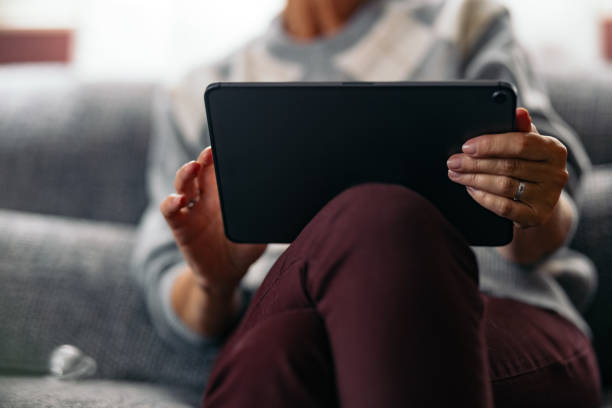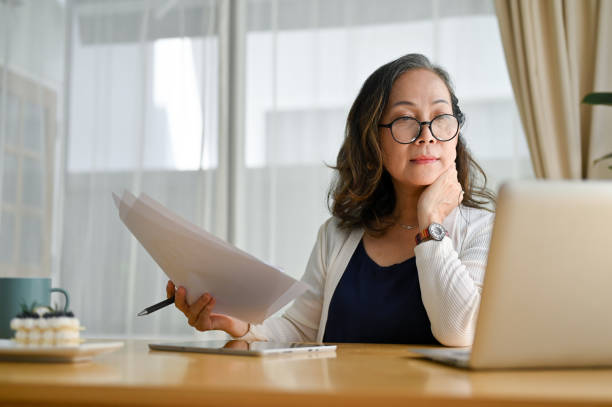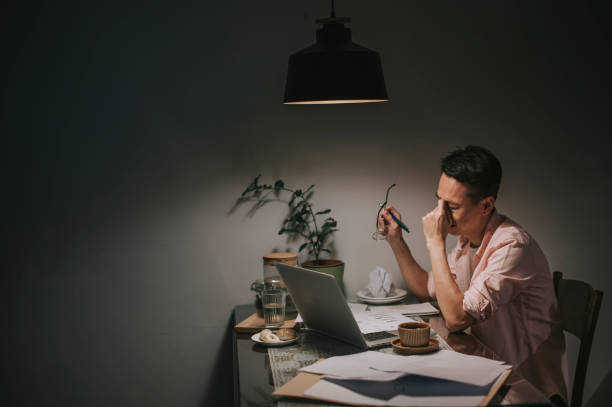What Is Digital Vision Strain?
Digital vision strain, also known as computer vision syndrome, is a group of eye and vision problems caused by long hours of screen use. It can happen from looking at computers, tablets, or phones for too long without a break.
This strain can lead to dry eyes, blurred vision, headaches, and neck or shoulder pain. The longer you focus on screens without resting your eyes, the worse these symptoms can get. Bright screens, small text, and poor posture also make the problem worse.
This condition affects both kids and adults. The more time you spend on screens, the more likely you are to feel its effects. Children may struggle with focus and complain of tired eyes after online classes or games. Adults often experience eye fatigue, headaches, or neck pain after long hours of work or scrolling. Screen time adds up fast, whether for school, work, or fun, making regular breaks and good habits even more important.
Signs Your Eyes Are Tired From Screens
You might not even know you’re straining your eyes—until symptoms appear. Common signs of digital vision strain include:
- Blurry vision
- Dry, itchy eyes
- Headaches
- Neck or shoulder pain
- Trouble focusing
If you notice these signs after using a screen, your eyes may be telling you to take a break.
Why Screens Stress Your Eyes
Our eyes work harder when looking at screens. Here’s why:
- Blue light exposure: Screens emit blue light, which can disrupt your sleep and make your eyes tired. Blue light tricks your brain into thinking it’s still daytime, which can delay sleep and reduce sleep quality. Over time, this can lead to fatigue and eye discomfort.
- Blinking less: People blink less when staring at screens. This dries out your eyes. Blinking helps spread tears that keep your eyes moist and healthy. Less blinking means dry, itchy, or burning eyes after long screen sessions.
- Poor posture: Leaning in or slouching strains your neck and shoulders. Poor posture also affects your eye muscles, forcing them to work harder to stay focused. This can lead to headaches and eye strain.
- Too much focus: Reading tiny text or switching between tasks makes your eyes work overtime. Your eyes are constantly adjusting, which can cause fatigue. High screen contrast and glare make it even harder for your eyes to keep up.

How Much Screen Time Is Too Much?
There’s no perfect number, but experts recommend limiting screen time to no more than 2 hours per day for kids outside of schoolwork. Too much screen use can affect their sleep, learning, and mood. For adults, it depends on your job, especially if you work on a computer all day. Still, it’s best to follow the 20-20-20 rule—every 20 minutes, look at something 20 feet away for at least 20 seconds. This helps reduce eye strain and gives your eyes a much-needed break.
According to the American Optometric Association (AOA.org), even just 2 hours of screen time can lead to digital eye strain.
7 Simple Ways to Protect Your Eyes
You don’t have to give up your screen. Just use it smarter! Here are easy ways to help your eyes stay healthy:
1. Follow the 20-20-20 Rule
Every 20 minutes, look at something 20 feet away for 20 seconds. This relaxes your eye muscles. It’s called the 20-20-20 rule, and it’s an easy way to prevent digital eye strain. When you stare at screens too long, your eye muscles stay tight. Looking into the distance helps them relax and reset. This simple habit can reduce dryness, headaches, and blurry vision caused by too much screen time.
2. Blink More Often
Make a habit of blinking to keep your eyes moist. Blinking spreads tears across your eyes, which helps prevent dryness and irritation. You can even remind yourself with sticky notes near your screen. A small note that says “Blink!” can be a simple but helpful way to keep your eyes healthy. Some people also set timers or use apps to remind them to blink more often while working.
3. Adjust Your Screen
Keep your screen at eye level and about an arm’s length away. This helps reduce strain on your eyes, neck, and back. Tilt it slightly to avoid glare. Glare from lights or windows can make it harder to see and cause eye fatigue. You can also adjust the screen brightness to match the room lighting. Using an anti-glare screen filter may also help if you work in a bright space.
4. Use Blue Light Filters
Many phones and computers have a “night mode” or blue light filter. This setting changes the screen color to warmer tones, which are easier on your eyes, especially at night. Using night mode in the evening can also help you sleep better by reducing blue light exposure. You can also buy blue light glasses. These glasses have special lenses that block blue light and reduce eye strain during long screen use. They’re a simple way to protect your eyes if you use screens often.
5. Improve Lighting
Avoid working in the dark. When the room is too dark, your eyes have to work harder to see the screen, which can cause strain. Use soft lighting that reduces screen glare but still lights the room well. A desk lamp with a warm bulb or an overhead light with a shade can help. Try to place lights to the side of your screen, not behind or in front of it, to cut down on glare and reflections.
6. Take Regular Breaks
Stand up, stretch, and walk around every hour. Sitting too long can lead to stiff muscles and poor posture. This helps your body and gives your eyes a break. Moving around improves blood flow and relaxes your back, neck, and shoulders. It also gives your eyes a chance to rest from screen focus. Even a quick walk or a few stretches can refresh your mind and reduce eye strain.
7. Get an Eye Checkup
See an eye doctor once a year. Regular checkups help keep your vision healthy. They can spot early signs of strain or vision problems. An exam can also catch issues like dry eyes, blurry vision, or changes in your eyesight before they get worse. If you wear glasses or contacts, your doctor can make sure your prescription is still right. Early care can prevent bigger problems later on.
Screen Time Tips for Kids
Children are more sensitive to screens than adults. Too much screen time can affect their vision and even how they sleep. Here’s how to help:
- Set screen time limits
- Encourage outdoor play
- Make sure the screen is at eye level
- Teach the 20-20-20 rule early
- Use parental control apps to track time
The American Academy of Pediatrics recommends no screen time for children under 2, and 1 hour a day for kids aged 2 to 5 (HealthyChildren.org).

Does Blue Light Damage Eyes?
There is still debate about how harmful blue light really is. Some experts say it’s not strong enough to cause lasting eye damage. However, it can still have short-term effects. While it may not cause permanent damage, it can affect your sleep and lead to tired, dry eyes. Blue light can block melatonin, the hormone that helps you sleep, making it harder to fall asleep at night. It can also make your eyes feel sore or itchy after long screen use.
Using blue light glasses or filters can reduce discomfort. For more on this, check out this article from Harvard Health: Blue Light Has a Dark Side.
Natural Ways to Soothe Eye Strain
Want to ease the strain without medicine? Try these home remedies:
- Apply a warm compress
- Use artificial tears or eye drops
- Eat foods rich in vitamin A and omega-3s
- Massage your temples and eyelids gently
- Practice eye yoga or focus exercises
These small habits can improve your comfort, especially after long work or school days.
When to See an Eye Doctor
If your symptoms don’t go away after resting your eyes, it’s time to see a professional. Make an appointment if you:
- Still have headaches or blurred vision
- Feel pain behind your eyes
- Struggle with focus after rest
- Notice your vision getting worse
Your eye doctor may suggest glasses, screen filters, or lifestyle changes to help.
How Digital Vision Strain Affects Sleep
Screens late at night can mess with your sleep. Blue light stops your brain from making melatonin—the hormone that helps you sleep.
To fix this:
- Turn off screens 1–2 hours before bed
- Read a book or listen to music instead
- Use night mode if you must use a device
- Try blue light blocking glasses in the evening
Better sleep leads to better eye health too!

Healthy Habits for a Digital Lifestyle
Here’s a quick list of smart screen habits:
✅ Sit at least 20 inches from the screen
✅ Keep screens clean and glare-free
✅ Use larger text to reduce strain
✅ Lower screen brightness at night
✅ Keep your workspace well lit
✅ Use lubricating eye drops if needed
✅ Drink plenty of water to stay hydrated
These small steps can go a long way in protecting your vision.
Final Thoughts: Don’t Let Screens Steal Your Sight
Digital devices are here to stay, but your eye health doesn’t have to suffer. Screens are part of daily life for work, school, and fun. With smart habits and regular breaks, you can enjoy your screen time without pain or strain. Simple steps like adjusting screen brightness, blinking more often, and keeping screens at eye level can make a big difference. Using the 20-20-20 rule and setting screen time limits also helps protect your eyes each day.
👀 Your eyes work hard every day—give them the care they deserve.

